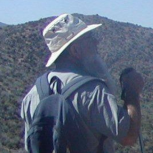Racer 2 Trial Run
-
Similar Content
-
- 10 replies
- 6,584 views
-
- 4 replies
- 6,602 views
-
- 10 replies
- 3,170 views
-
- 137 replies
- 66,538 views
-
- 5 replies
- 1,727 views
-
- 7 replies
- 2,018 views
-
-










Recommended Posts
Create an account or sign in to comment
You need to be a member in order to leave a comment
Create an account
Sign up for a new account in our community. It's easy!
Register a new accountSign in
Already have an account? Sign in here.
Sign In Now